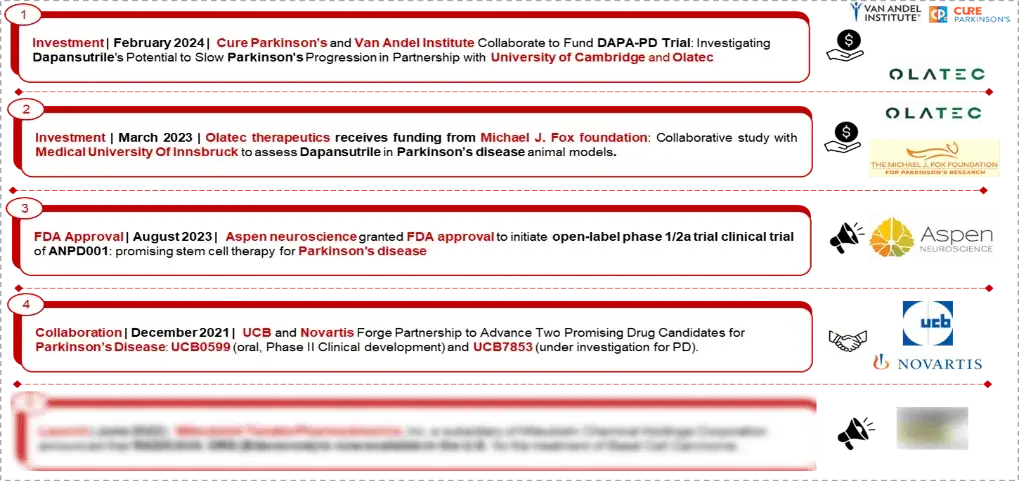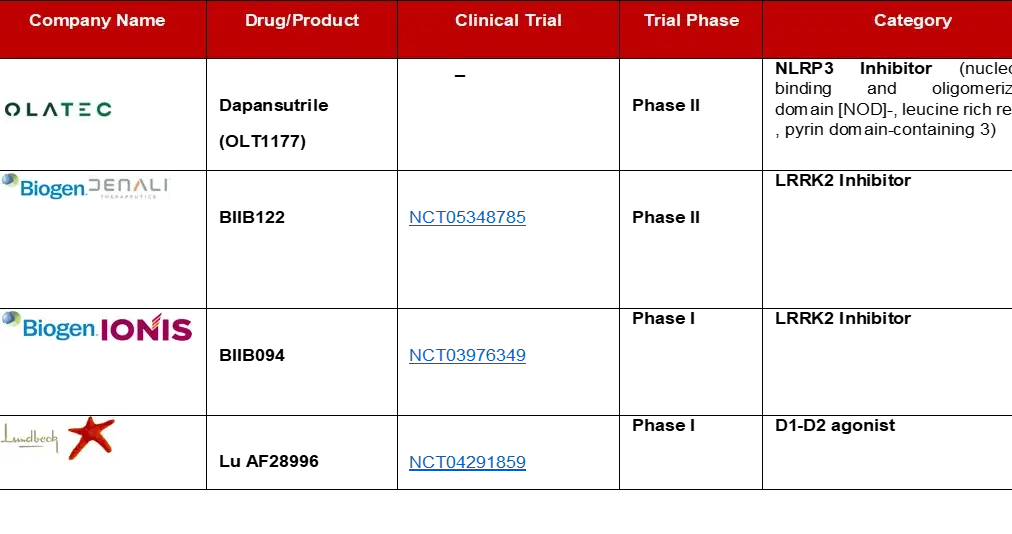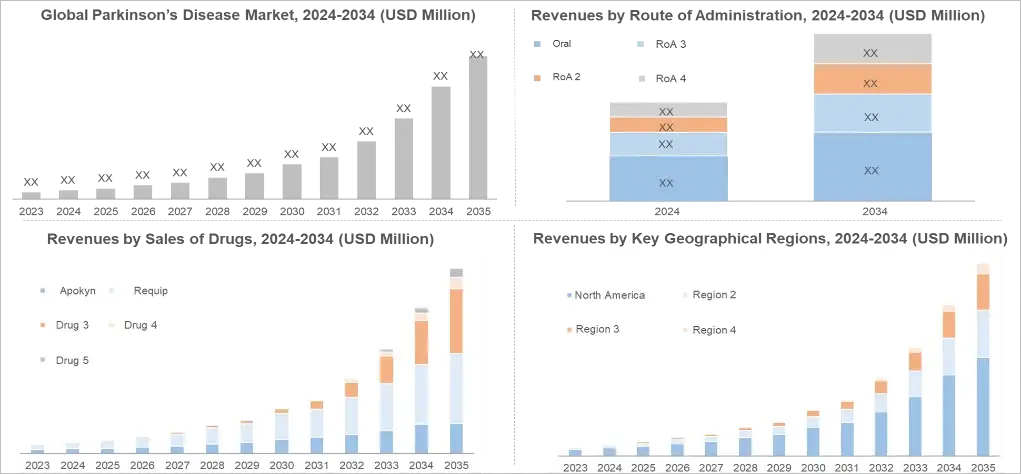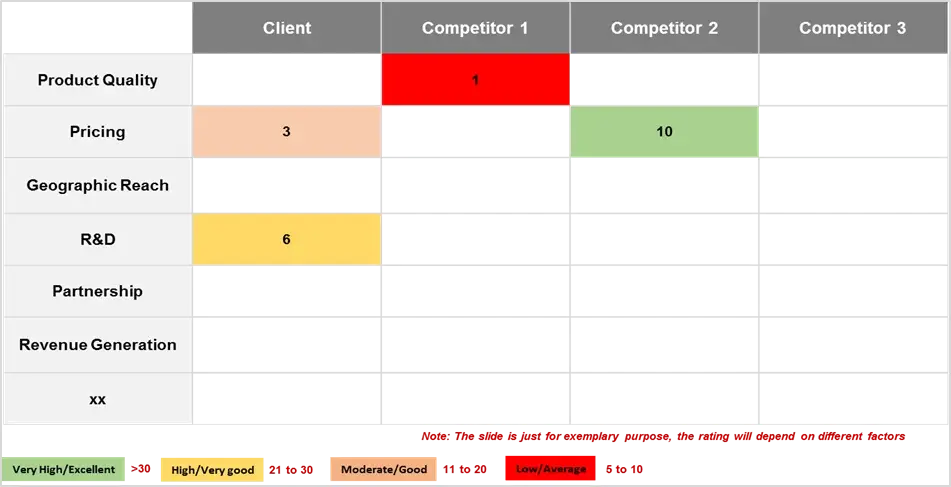Parkinson’s disease is a progressive neurodegenerative disorder characterized by the loss of dopamine-producing neurons in the brain. It affects various aspects of movement and can lead to a range of motor and non-motor symptoms.
Symptoms and Progression
Symptoms of Parkinson’s disease typically begin gradually and worsen over time. Motor symptoms include bradykinesia (slowed movements), tremors, rigidity, and impaired balance and coordination. Non-motor symptoms may include depression, loss of sense of smell, sleep disturbances, and cognitive changes.
Diagnosis and Staging
Diagnosis of Parkinson’s disease is primarily based on clinical symptoms and may involve neurological examinations and imaging studies. Staging systems such as the Movement Disorder Society-Unified Parkinson’s Disease Rating Scale (MDS-UPDRS) help assess the impact of the disease on various aspects of daily living.
Medical Treatment
The majority of Parkinson’s patients are treated with medications to relieve the symptoms of the disease. These medications work by stimulating the remaining cells in the substantia nigra to produce more dopamine or by inhibiting acetylcholine production, thus restoring the balance between neurotransmitters in the brain.
Surgical Interventions
In cases where medication alone is insufficient to control symptoms, surgical interventions may be considered to provide more targeted treatment.
Parkinson’s disease management has seen significant advancements in treatment options, including medication and surgical interventions. The future holds promise for further innovations, such as gene therapy, stem cell therapy, and neuroprotective agents, aimed at slowing or halting disease progression. With ongoing research and collaborative efforts, there is hope for improved outcomes and enhanced quality of life for individuals living with Parkinson’s disease.
The scope of this report on Parkinson’s disease encompasses an in-depth analysis of its etiology, symptoms, diagnosis, current treatment options, and emerging therapies. It will explore the impact of Parkinson’s on individuals, families, and society, delving into the challenges faced in managing the disease and the advancements in research aimed at improving patient outcomes. Additionally, the report will address the socioeconomic implications, caregiver burden, and potential avenues for future research and intervention.
In order to gain a comprehensive understanding of the evolving field of Parkinson’s research and development, it is essential to delve into the current state of scientific exploration and the emergence of innovative treatment approaches. This knowledge acts as a crucial guide for making well-informed decisions in the Parkinson’s therapy realm, ensuring strategic choices and the effective integration of treatments.

Fig 1: Recent Developments
In Parkinson’s research and market analysis, company profiling is vital. It involves a thorough examination of companies in the Parkinson’s sector, providing insights into historical background, product portfolio, financial stability, competitive strategies, and recent achievements. This information aids in assessing the competitive landscape, identifying collaboration opportunities and strategic partnerships for progress in different therapy.

Figure 2: Strategic Activities
This report conducts a detailed patent analysis for the Parkinson’s domain, aiming to uncover key patents, influential inventors, and emerging technological trends. It provides organizations with valuable insights into innovation, competition, and potential opportunities for product enhancement or collaboration within the Parkinson’s field.
The clinical trial analysis in this market research report assesses Parkinson’s clinical trials comprehensively. It includes a detailed breakdown of trial categories, study structures and research methodologies. The main goal is to evaluate the effectiveness, safety, and outcomes of pharmaceuticals and medical interventions for Parkinson’s disease.

Fig 3: Clinical Trials for Different Companies
In this market research report focused on Parkinson’s disease, the market forecast section provides a comprehensive outlook on upcoming trends, growth prospects, and key factors influencing supply and demand dynamics. This segment includes quantitative predictions, offering valuable insights into market size, revenue forecasts, and potential pathways for growth within the field of Parkinson’s Disease.

Fig 4: Market Forecast for Parkinson’s Disease
In this market research report centered on Parkinson’s disease, the section on the competitive landscape will offer a thorough overview of leading market participants, detailing their market shares and providing brief profiles highlighting strengths, weaknesses, and strategic approaches within the Parkinson’s disease domain

Fig 5: Competitors Comparison
Cutting-Edge Developments and Patents in Parkinson’s Disease Therapeutics: Explore Innovative Drug Candidates and Intellectual Property Transforming Parkinson’s Treatment Landscape. Delve into ground-breaking approaches and patents driving progress in managing Parkinson’s disease, a critical aspect of neurological disorder therapy.
Market Prospects and Challenges in Parkinson’s Disease Management: Identify Growth Opportunities and Distinct Challenges in the Parkinson’s Management Market within the context of neurological disorders. Evaluate the evolving landscape for Parkinson’s therapies and the impediments faced in enhancing quality of life outcomes for patients.
Market Trends and Dynamics in Parkinson’s Disease Management: Understand Current and Future Trends in the Parkinson’s Disease Management Market, unravelling the dynamics that shape the field of neurological disorder management and patient care.
Pipeline Advances and Breakthroughs in Parkinson’s Disease Therapies: Evaluate emerging therapies and innovative strategies for advancing therapeutics in the management of Parkinson’s Disease. Stay abreast of breakthroughs and progress in Parkinson’s treatment options.
Ongoing Clinical Trials for Parkinson’s Disease Management: Stay Updated on Developments in Clinical Trials for Parkinson’s Treatment. Explore the latest advancements and potential breakthroughs in Parkinson’s therapies through ongoing clinical research.
Key Contributors in Parkinson’s Disease Research and Neurological Health: Gain Insights into Industry Leaders Shaping the Landscape of Parkinson’s Disease Research and Neurological Health Enhancement within the domain of neurological disorders therapy. Explore organizations and researchers leading the way in Parkinson’s management.
In order to give the most precise estimations and forecasts, Wissen Research uses an extensive and iterative research approach that is focused on reducing deviation. The company blends top-down and bottom-up methodologies for market segmentation and quantitative estimation. In addition, data triangulation, which examines the market from three separate angles, is a recurrent topic present in all of our research studies. Important components of the approach used for all of our studies include the following:
Preliminary data mining
On a wide scale, unprocessed market data is collected. Continuous data filtering makes sure that only verified and authenticated sources are taken into account. Additionally, data is extracted from a wide range of reports in our repository and from a number of reputable premium databases. We gather information from raw material suppliers, distributors, and purchasers to help with this since understanding the entire value chain is crucial for a thorough understanding of the market.
Surveys, technical symposia, and trade magazines are used to gather information on technical concerns and trends. Technical information focusing on white space and freedom of movement is also obtained from an intellectual property standpoint. Additionally, information on the industry’s drivers, constraints, and pricing patterns is obtained. As a result, a variety of original data are included in the material that is then cross-validated and certified with published sources.
Statistical model
We use simulation models to generate our market projections and estimates. Every study receives a special model that is tailored to it. Data for market dynamics, the technology environment, application development, and pricing patterns are gathered and supplied into the model all at once for analysis. The relative relevance of these factors is investigated, and their impact on the forecast period is assessed, using correlation, regression, and time series analysis. The process of market forecasting combines technological analysis with economic strategies, practical business acumen, and subject expertise.
Econometric models are frequently used for short-term forecasting, but technology market models are typically employed for long-term forecasting. These are based on a confluence of the business environment, regulatory environment, economic projection, and technical landscape. In order to develop global estimates, it is preferable to estimate markets from the bottom up by integrating data from key regional markets. This is required to ensure accuracy and a complete comprehension of the subject. Among the variables taken into account for forecasting are:
Regulations and anticipated developments
We give these criteria weights and use weighted average analysis to assess their market influence in order to calculate the anticipated market growth rate.
Primary research | Secondary research |
· Manufacturers · Technology distributors and wholesalers · End-user surveys · Consumer surveys | · Company reports and publications · Government publications · Independent investigations · Economic and demographic data · Online searches · Research reviews · Reference customers |
1. Introduction
1.1 Overview of Parkinson’s Disease
1.2 Causes and Risk Factors
1.3 Symptoms and Diagnosis
1.4 Pathophysiology
1.5 Epidemiology
1.6 Our Report’s Focus
2. Treatment Approaches
2.1 Current Treatment Approaches
2.2 Research on New Treatment Options
3. Diagnostics Approaches
3.1 Current Diagnostics Approaches
3.2 Research on New Diagnostics Options
4. Market Insight
4.1 Market Trends in Parkinson’s Disease
4.2 Market Drivers and Challenges
4.3 Strategic Activities (Funding’s, Partnerships, Mergers and Acquisitions)
5. Clinical Trials in Parkinson’s Disease
5.1 Clinical Trial Analysis
5.1.1 Clinical Pipeline for Parkinson’s Disease
5.1.2 Distribution by Trial Registration Year
5.1.3 Distribution by Phase of Development
5.1.4 Distribution by Phase of Development and No. of Patients
5.1.5 Distribution by Trial Registration Year and No. of Patient Enrolled
5.1.6 Distribution by Key Sponsors and Phase of Development
5.2 Clinical Trial Analysis Based on Drug Specific Information
5.2.1 Distribution by Route of Administration
5.2.2 Distribution by Drug Usage
5.2.3 Distribution by Target Population
5.2.4 Distribution by Type of Drug/Therapy
6. Product Analysis
6.1 Emerging Therapeutic and Diagnostics Products
6.2 Phase 3 products – Product Portfolio
7. Patent Analysis
7.1 Intellectual Property Landscape
7.2 Notable Patents and Innovations
7.3 Top assignees
7.4 Geography focus of top assignees
7.5 Legal Status
7.6 Technology Evolution
7.7 Key Patents
7.8 Patent Trends and Innovations
7.9 Key Players and Patent Portfolio Analysis
8. Competitive Analysis
8.1 Benchmarking Parameters
8.2 Benchmarking for scouting top competitors
8.3 Leading Companies in Parkinson’s Disease Market
8.4 SWOT Analysis
9. Market Forecast (2024-2034)
9.1 Methodology
9.2 Assumptions
9.3 Projected Growth of Parkinson’s Disease Market (2024-2034)
9.3.1 Global Parkinson’s Disease Market (2024-2034)
9.3.1.1 By Drug Class
9.3.1.1.1 Decarboxylase Inhibitors
9.3.1.1.2 NLRP3 Inhibitor
9.3.1.1.3 LRRK2 Inhibitor
9.3.1.1.4 Dopamine Agonists
9.3.1.1.5 COMT Inhibitors
9.3.1.1.6 MAO-B Inhibitors
9.3.1.1.7 Others
9.3.1.2 By Route of Administration
9.3.1.2.1 Oral
9.3.1.2.2 Injection
9.3.1.2.3 Transdermal
9.3.1.3 Parkinson’s Disease Market in Specific Regions (2024-2034)
9.3.1.3.1 North America
9.3.1.3.2 Europe
9.3.1.3.3 Asia-Pacific
9.3.1.3.4 Rest of the World
10. Future Perspective and Advancements
10.1 Emerging Technologies in Parkinson’s Disease Research
10.2 Personalized Medicine and Biomarker Development
11. Conclusion
12. Appendix
12.1 Glossary of Terms
12.2 List of Abbreviations
12.3 References
S.No | Key Highlights of Report | |
1. | Patent Analysis | · Top Assignee · Geography focus of top Assignees · Assignee Segmentation · Network analysis of the top collaborating entities in Parkinson’s disease therapy patent applications · Technology Evolution · Key Patents · Application and Issued Trend · Key technology |
2. | Market Analysis | · Current Treatment Options · Emerging Therapies and Research Developments (by product analysis and scientific analysis) · Strategic activities · Therapeutic activity of drugs · Detailed profiles of the key players that are engaged in the development of approved drugs |
3. | Clinical Trials | · Analysis of clinical trial through graphical representation · Coverage of treatments from pre-clinical phases till commercialization (also including terminated and completed studies) |
4. | Forecast | · Detailed comprehension of the historic, current and forecasted trend of market by analysis of impact of these treatments on the market |
5. | Opportunity Analysis | · Technology evolution based on problem solution · Potential licensees · Geography of suppliers · Treatment trends · Unmet needs · SWOT · Drivers and barriers |
6. | KOLs | · A detailed analysis and identification of the key opinion leaders (KOLs), shortlisted based on their contributions |
LIST OF FIGURES
Figure number | Description |
Figure 1 | Terminology of Parkinson’s Disease Over The Years |
Figure 2 | Parkinson’s Disease Treatment– History and Present |
Figure 3 | Projection of Parkinson’s Disease till 2033 in different geographies |
Figure 4 | Technology Categorization Of Drug Delivery Methods For Parkinson’s Disease |
Figure 5 | Recent Technology Trends in Parkinson’s Disease |
Figure 6 | Technology Evolution in Drug Delivery Market of Parkinson’s Disease |
Figure 7 | Geographical Distribution of Patents of Top Assignees |
Figure 8 | Assignee Segmentation (Companies) |
Figure 9 | Assignee Segmentation (Educational Establishment) |
Figure 10 | Patent Based Key Insights of xx |
Figure 11 | Patent Based Key insights of xx |
Figure 12 | Patent Based Key insights of xx |
Figure 13 | Geographic Distribution of the Universities/Research Organizations Filling Patents On Various Drug Delivery Approaches |
Figure 14 | Key Summary Regarding the Patent Filing On Parkinson’s Disease |
Figure 15 | Product Pipeline of Different Approaches with Companies Name |
Figure 16 | Portfolio for Approved Product |
Figure 17 | Clinical Trials Conducted till Date by Different Companies and Universities |
Figure 18 | Clinical Trials based Key Insights |
Figure 19 | Key Growth Drivers for Parkinson’s Disease Market |
Figure 20 | Restraints for Parkinson’s Disease Market |
Figure 21 | xx Portfolio (Top Player) |
Figure 22 | xx Portfolio (Top Player) |
Figure 23 | xx Portfolio (Top Player) |
Figure 24 | xx Portfolio (Top Player) |
Figure 25 | xx Portfolio (Top Player) |
Figure 26 | xx Portfolio (Start-up) |
Figure 27 | xx Portfolio (Start-up) |
Figure 28 | xx Portfolio (Start-up) |
Figure 29 | Strategic Activities Including Collaboration, Partnerships and Acquisitions |
Figure 30 | Research Methodology for Patent, Selection and Analysis |
Figure 31 | Research Methodology for Clinical Trials, Selection and Analysis |
LIST OF GRAPHS
Graph number |
Description |
Graph 1 | Number of people worldwide with Parkinson’s Disease |
Graph 2 | Problem Solution Analysis |
Graph 3 | Top Assignees in Parkinson’s Disease |
Graph 4 | Technology Focus of Top Assignees (IPC-CPC Classes) |
Graph 5 | Top Countries of Origin of Patents |
Graph 6 | New entrants in drug delivery field |
Graph 7 | Legal Status |
Graph 8 | Most Cited Patents |
Graph 9 | Patents with Largest Invention Families |
Graph 10 | Most Claim-Heavy Patents |
Graph 11 | Filing Trends |
Graph 12 | Clinical Trial Filing Timeline |
Graph 13 | Recruitment Status of the Clinical Trials Related to the Different Drug Delivery Approaches |
Graph 14 | Clinical Trials Phases with Respect to Specific Drug Delivery Approach |
Graph 15 | Weighted Scores for Top 5 Players According to Benchmarking Criteria |
Graph 16 | Parkinson’s Disease (CAGR: 2024-2034) |
Graph 17 | Parkinson’s Disease Market Share: Distribution by Key Geographical Area, 2024-2034 |
LIST OF TABLES
Table number | Description |
Table 1 | Parameters included and excluded for conducting the analysis |
Table 2 | Technology Classes with Definitions |
Table 3 | Patent Litigation |
Table 4 | Highest Market Valued Patents |
Table 5 | SWOT Analysis of Top 3 Players |
Table 6 | Parameters and their score for Benchmarking |
Table 7 | Weighted scores for top 5 players according to benchmarking criteria |
© Copyright 2024 – Wissen Research All Rights Reserved.